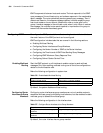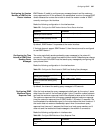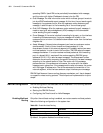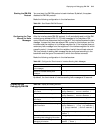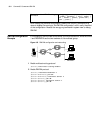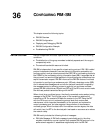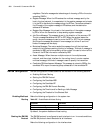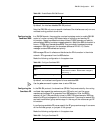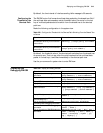
512 CHAPTER 35: CONFIGURING PIM-DM
operating IGMPv1 (each PIM router periodically broadcasts a hello message,
and the router with higher IP address is chosen to be the DR).
■ Graft Message: The host informs the router which multicast groups it wants to
join by a IGMP membership report message. At this time, the port sends a graft
message to the upstream router. After the upstream router receives a graft
message, it adds this port to the forwarding list of the multicast group.
■ Graft ACK Message: After the upstream router receives the graft message, it
needs to send graft acknowledgement (ACK) message to the downstream
router sending the graft message.
■ Prune Message: If the router interface forwarding list is empty, or the interface
forwarding list becomes empty, the prune message will be sent to the
upstream router to inform it to delete the downstream router from its interface
neighbor list.
■ Assert Message: A shared network segment can have two upstream routers
simultaneously. If both of them forward multicast packets to it, the
downstream routers of this network segment will probably receive two same
multicast packets. In order to avoid this condition, PIM-DM adopts the assert
message mechanism. If a router receives multicast packets at the forwarding
port of a shared LAN, it requires all the routers operating PIM-DM (group
address is 224.0.0.13) to send an assert message. The downstream routers
determine the winner by comparing the specific domains of the assert message
according to the relevant series of rules. The router with little message
preference wins. If the preference is the same, the router with the smaller
message metric value wins. If the message metric value is the same, the router
with the bigger IP address wins. The winner serves as the transmitter of the
network segment, while the loser sends an output interface prune message.
PIM-DM itself does not have a routing discovery mechanism, so it has to depend
on a specific unicast routing protocol. Thus the protocol implementation is quite
simple.
PIM-DM Configuration PIM-DM configuration includes tasks that are described in the following sections:
■ Enabling Multicast Routing
■ Starting the PIM-DM Protocol
■ Configuring the Time Interval for Hello Messages
Enabling Multicast
Routing
Only after the multicast routing is enabled, can routers receive multicast packets.
Make the following configuration in the system view.
Table 583 Enable Multicast Routing
By default, the system disables the multicast routing.
Operation Command
Enable multicast routing multicast routing-enable
Disable multicast routing undo multicast routing-enable





